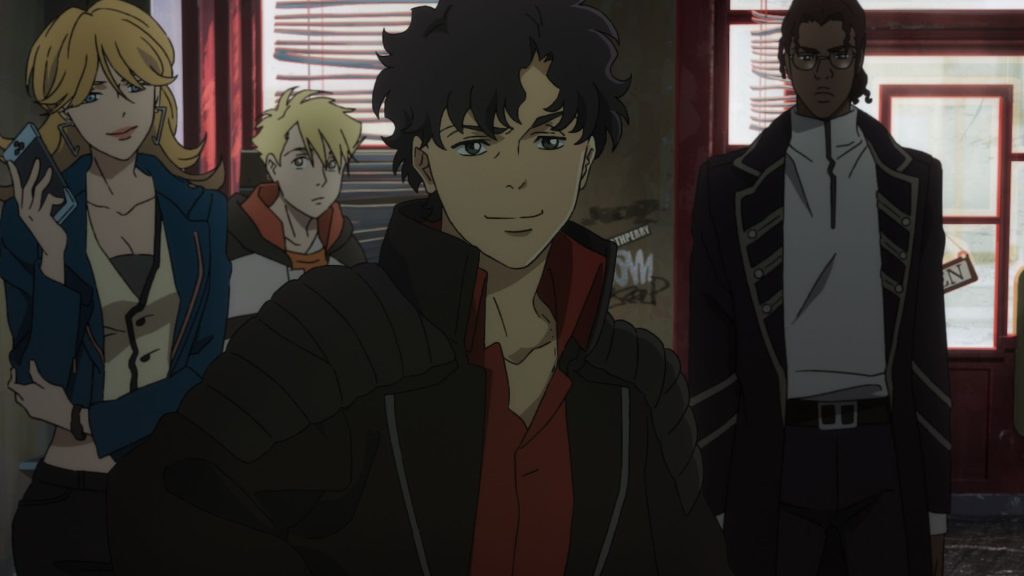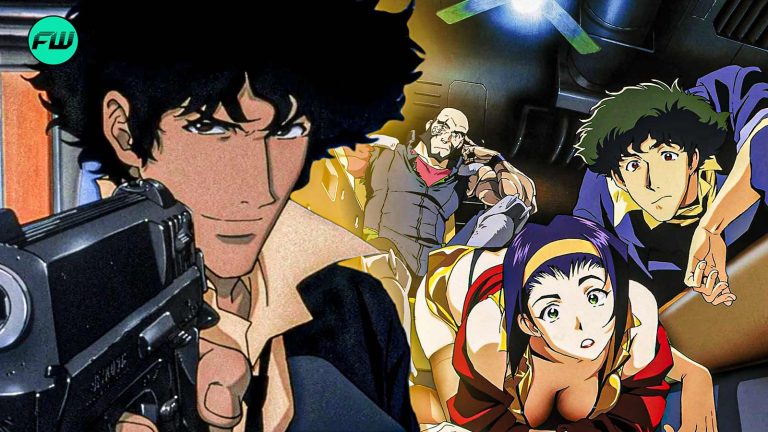
While Lazarus creator Shinichiro Watanabe has had a prolific career in anime, from original works like Samurai Champloo and Carole and Tuesday as well as making his mark on well-known franchises like Blade Runner; he is perhaps still best known for his seminal 1998 masterpiece Cowboy Bebop. For 26 episodes and a theatrical film, the series enthralled fans with its slick action, lovable characters, and infectiously catchy jazz soundtrack.
Now, decades later, Watanabe returns to the Adult Swim network that made Bebop famous in the West with Lazarus. This original series aims to tell a new, more grounded, story that nevertheless evokes some of the same feelings and atmosphere that make Watanabe’s work, Bebop included, so beloved. So far, I would say he and his team have largely succeeded; though please bear in mind that this only applies to the first five episodes, as that was what was made available to me at time of writing.
The plot
In the not-too-distant future of 2052, a brilliant scientist named Dr. Skinner develops a new painkiller called Hapuna that quickly takes the world by storm due to its seeming ability to permanently end a person’s pain. However, three years later, Skinner reveals that Hapuna mutates into a lethal poison after 42 months, meaning that humanity has only thirty days left until its collective demise.
Only Skinner himself can neutralize the poison, but he’s been in hiding since Hapuna’s debut. So, the government secretly assembles a covert task force, codenamed Lazarus, to track him down. Each of Lazarus’ five members has their own unique skills and a record to prove them, but will it be enough to save the world?
The review
At first glance, Lazarus may seem like Shinichiro Watanabe simply doing Cowboy Bebop again and, in fairness, the two do have certain things in common. The jazzy intro theme and its “black silhouette on colored background” visuals are the most deliberate callback, but they also both feature surrealist cold opens, dystopian future settings, and a ragtag group of outcasts all struggling to get by. Even our protagonist Axel bears a striking resemblance to Bebop lead Spike Spiegel, though Axel is slightly younger.
However, this is where the similarities end. The Lazarus crew is not only bigger than the Bebop crew, starting off with five as opposed to Bebop‘s three or four, they are also brought together by force rather than chance. More substantially, Lazarus‘ story is much more grounded compared to Bebop, both literally and figuratively. The series takes place entirely on Earth instead of hopping from planet to planet and its view of the future is a decidedly more realistic one. Technology has advanced in the thirty or so years between the present day and the events of Lazarus, but only slightly.
Moreover, while Bebop usually kept its dystopian elements in the background, Lazarus brings them very much into the foreground. After all, our heroes’ goal is to prevent a world already in dire straits from literally dying. Though this does bring up one other similarity between the two shows: their strikingly mundane perspectives on living in a dystopia. By the start of Cowboy Bebop, Earth is essentially dead, and the galaxy has already been consumed under a nightmarish capitalist hellscape. And the series focuses on trying to live day-to-day in that reality rather than doing anything to shut that system down if only because, by then, it’s already too late.
Meanwhile, in Lazarus, while there are protests and panic following Skinner’s announcement, most of the characters we meet outside of the main cast largely return to some semblance of normalcy, either because they deny that the world is actually ending or because routine is the only way they can process such devastating news. If that isn’t an eerily accurate representation of what it feels like to simply exist in 2025, I don’t know what is.
But even without the biting social commentary, Lazarus is simply very fun to watch. The main cast are all very likable and bounce off each other well and each episode manages to tell a compelling, self-contained story while also pushing the main narrative forward. Plus, the action scenes maintain a delicate balance of stylized sleekness and realistic weight and impact, thanks in no small part to the supervision of John Wick director Chad Stahelski.
However, it’s the show’s aforementioned ability to speak to real world issues so directly without compromising its characters or narrative that makes Lazarus stand out. Much of the panic around Hapuna echoes the early days of COVID, as well as being predominantly inspired by the opioid crisis per Watanabe himself, and the show touches on everything from homelessness to LGBTQ rights while keeping it all within its own distinct world and story; though only time will tell if it manages to stick the landing.
Is Lazarus worth watching?

If I have any real issue with Lazarus, it’s that I feel like I haven’t seen enough of it yet. Only five episodes in, the show has barely scratched the surface of its story, and I get the feeling that its most standout moments and unifying thesis are still waiting in the wings. But what I have seen, I have very much enjoyed.
The action is sleek, the music is catchy, the characters are compelling, and the story speaks volumes about our present day while never losing sight of the intriguing mystery and manhunt at its core. I have no idea where this could end, but I cannot wait to find out.
Lazarus premieres April 5 at midnight on Adult Swim. Five out of thirteen episodes reviewed.
This post belongs to FandomWire and first appeared on FandomWire


